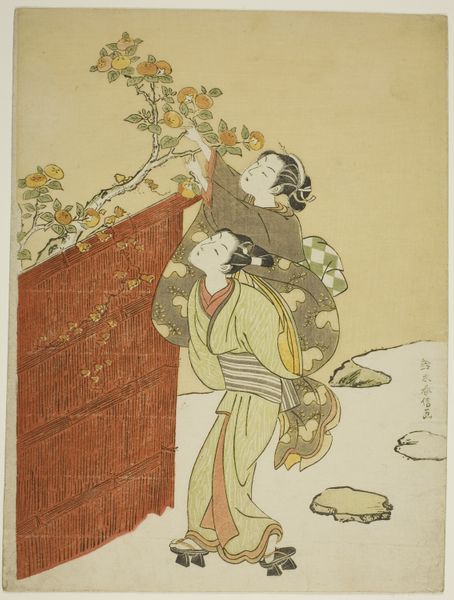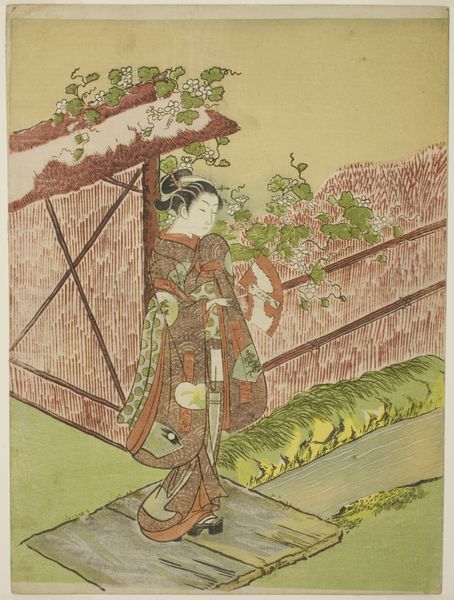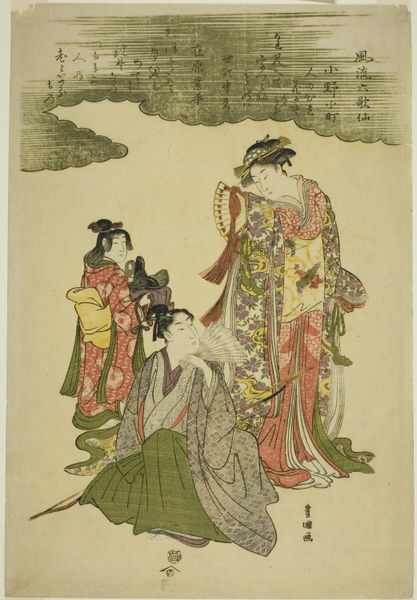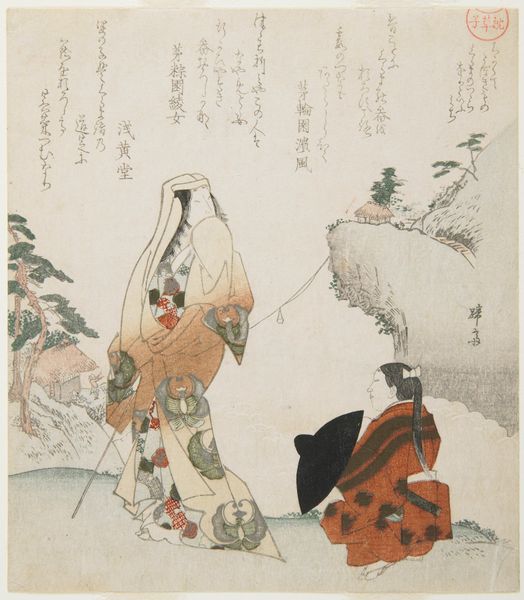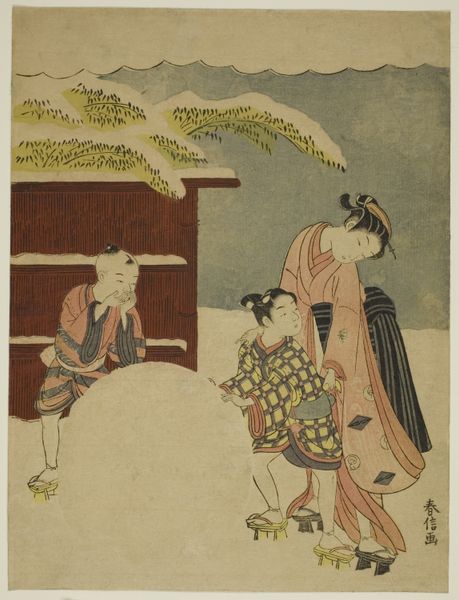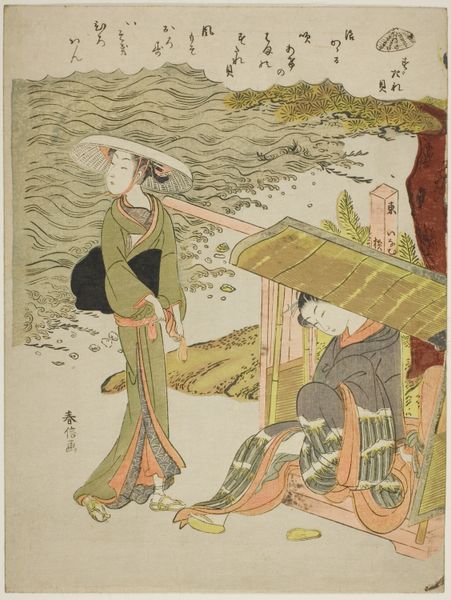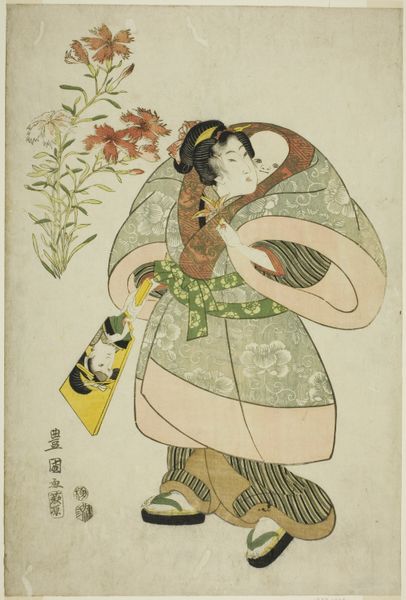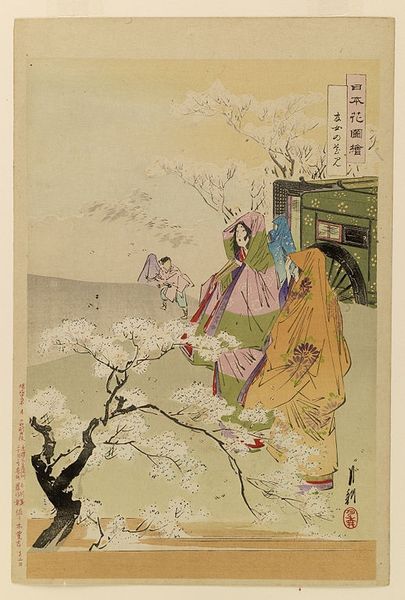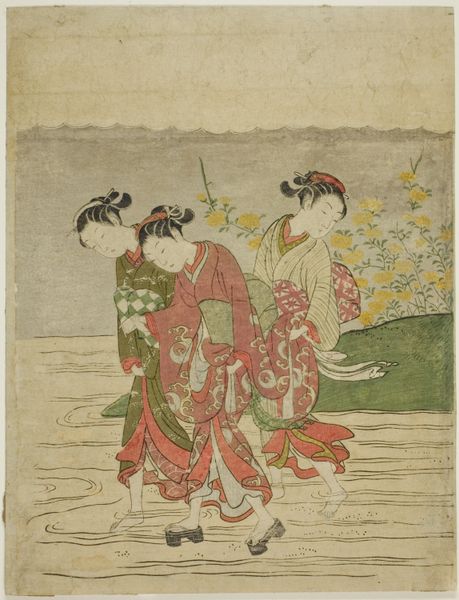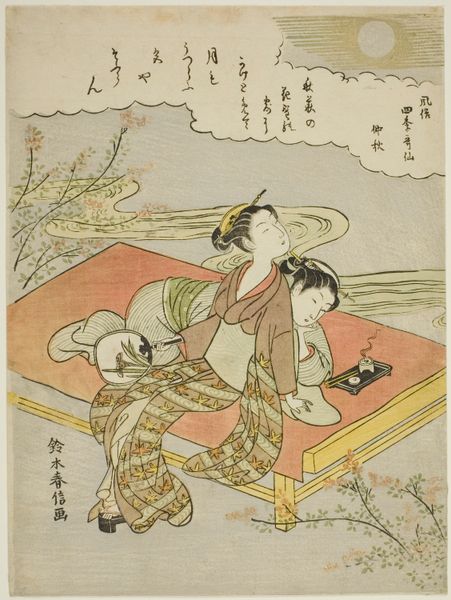
Bush Clover (Hagi), from an untitled series of Flowers c. 1769
0:00
0:00
print, woodblock-print
#
ink painting
# print
#
asian-art
#
landscape
#
ukiyo-e
#
figuration
#
woodblock-print
#
genre-painting
Dimensions: 28.8 × 21.2 cm (11 1/4 × 8 1/2 in.)
Copyright: Public Domain
Editor: This is *Bush Clover (Hagi), from an untitled series of Flowers*, a woodblock print by Suzuki Harunobu, dating from around 1769. The delicate lines and muted colors give it such a serene and nostalgic atmosphere. What visual stories do you see unfolding here? Curator: This print immediately strikes me with its quiet contemplation. Notice how the figures interact with the landscape, almost as if they are extensions of the natural world itself. Bush clover, or *hagi*, in Japanese art symbolizes autumn, but also evokes a sense of transience and the beauty of impermanence. Editor: Transience… I can see that in the gentle bowing of the figures, perhaps a momentary pause in their day. Is there a cultural weight attached to the plant? Curator: Absolutely. *Hagi* appears often in Japanese poetry and art as a metaphor for longing and melancholic beauty, like cherry blossoms. Consider also how Harunobu places the figures in relation to the calligraphy. Does the placement add to the overall mood? What does the imagery evoke? Editor: The calligraphy seems to float above them like thoughts, enhancing that feeling of fleeting beauty. Is that a river in the background, or an ocean? Curator: Rivers in ukiyo-e prints often serve as metaphors for the passage of time, or the journey of life. It's as if the artist invites us to reflect on our own fleeting existence within the grand sweep of nature's cycles. These images are filled with symbols and archetypes – flowers, the moon, women gathering or observing nature. Harunobu masterfully layers the narrative, inviting the viewer into an ongoing act of discovery. Editor: That’s fascinating, I’m starting to see how many cultural references are packed into such a seemingly simple scene. Thanks for sharing all of this! Curator: My pleasure! It reminds me that these artworks serve as bridges across time, carrying memories, and connecting us to our collective past.
Comments
No comments
Be the first to comment and join the conversation on the ultimate creative platform.


